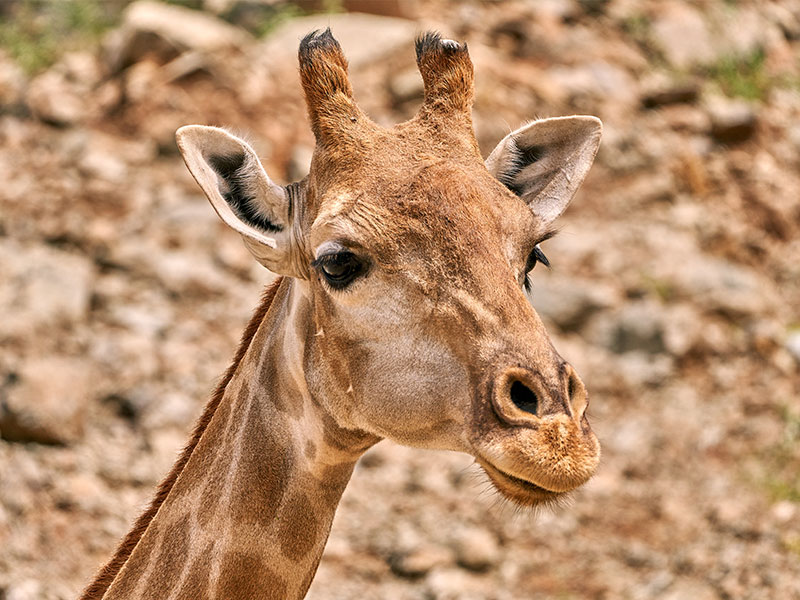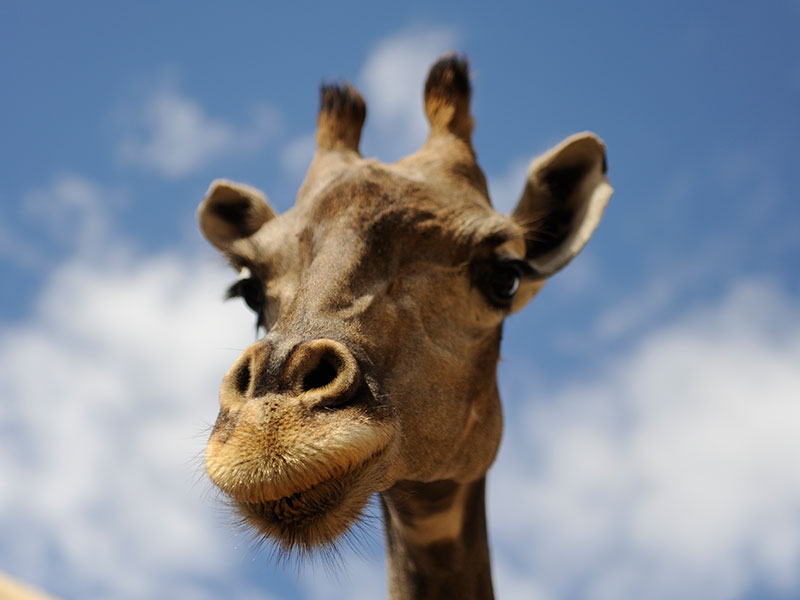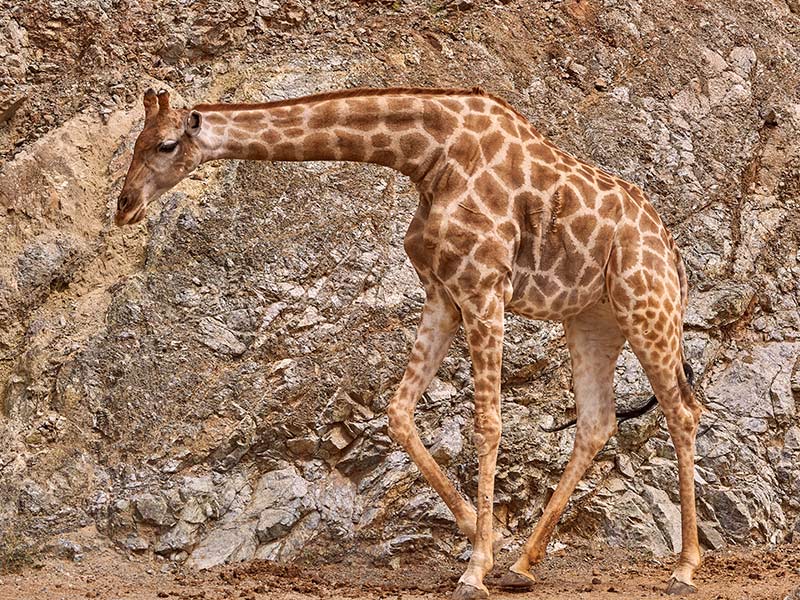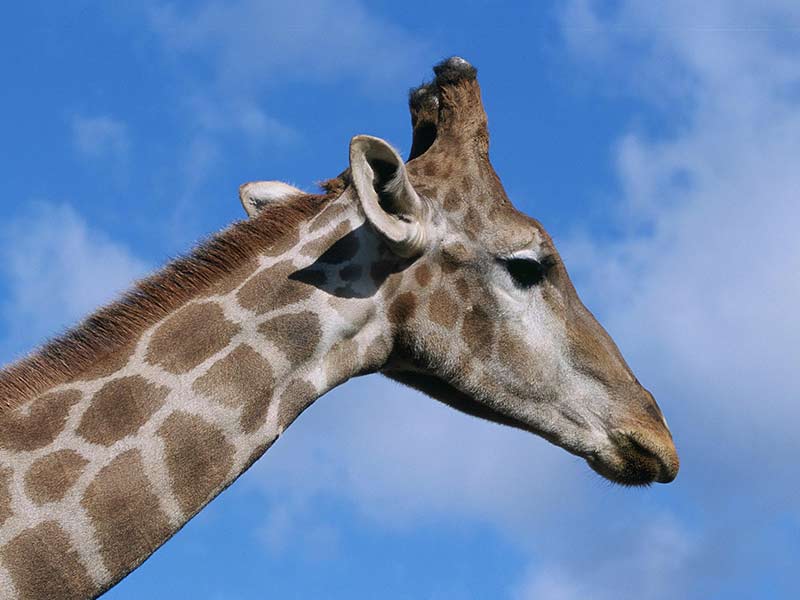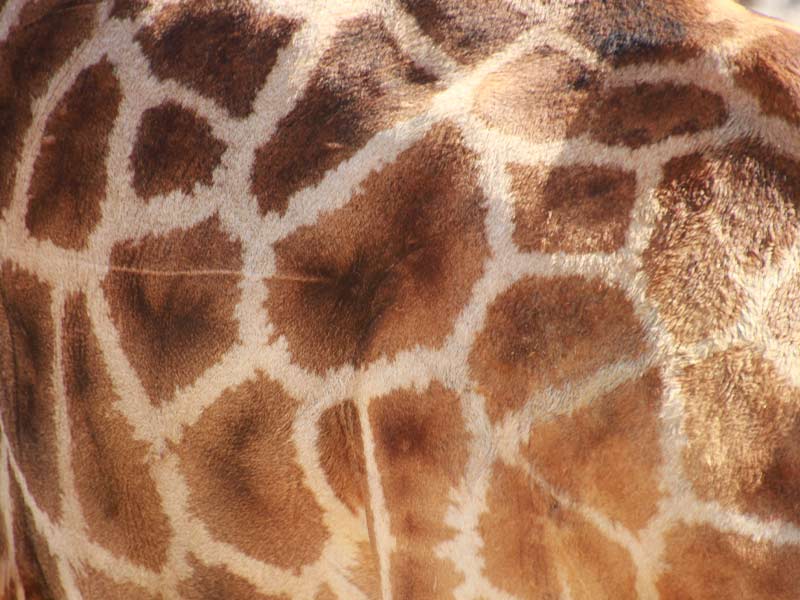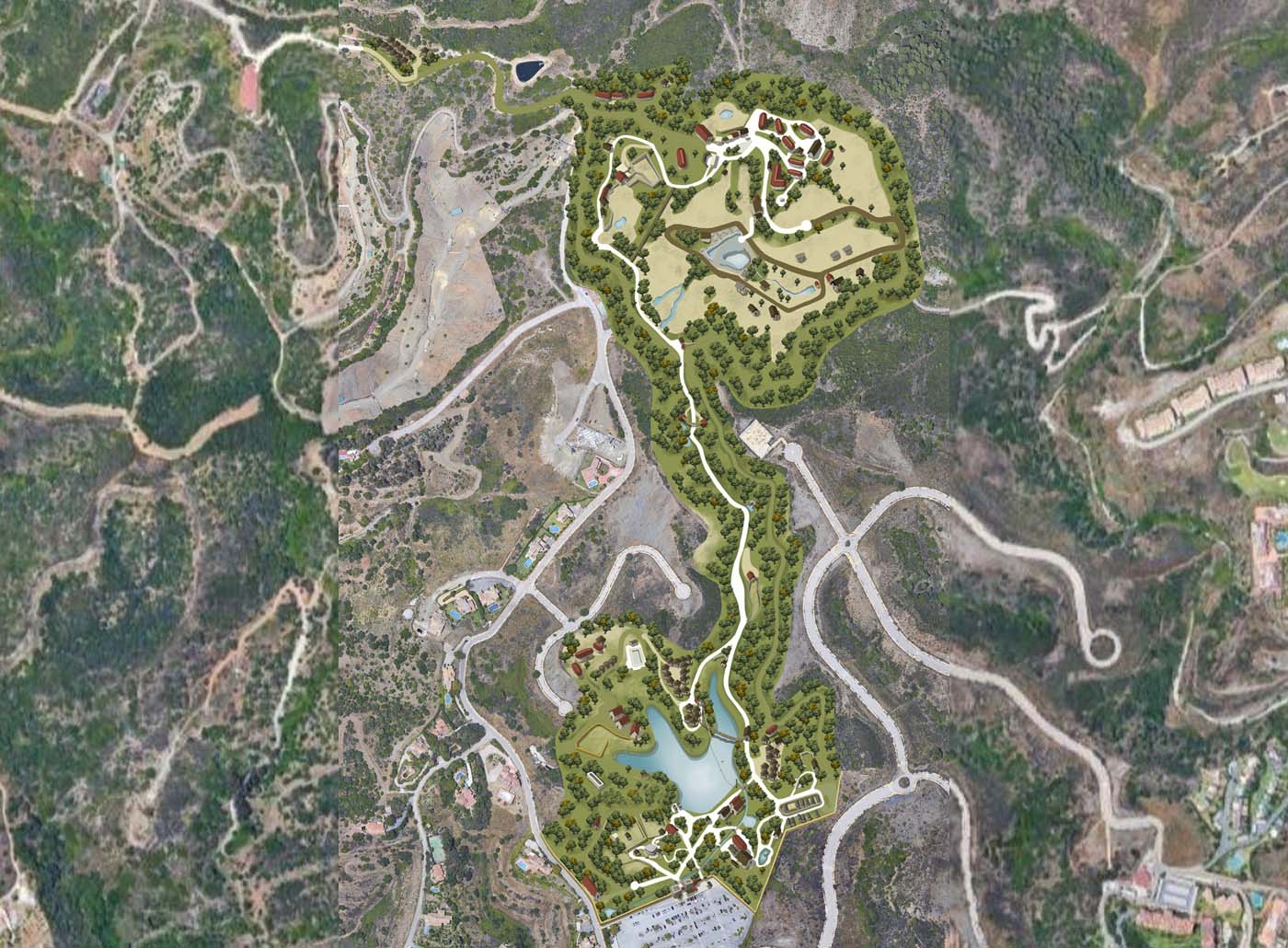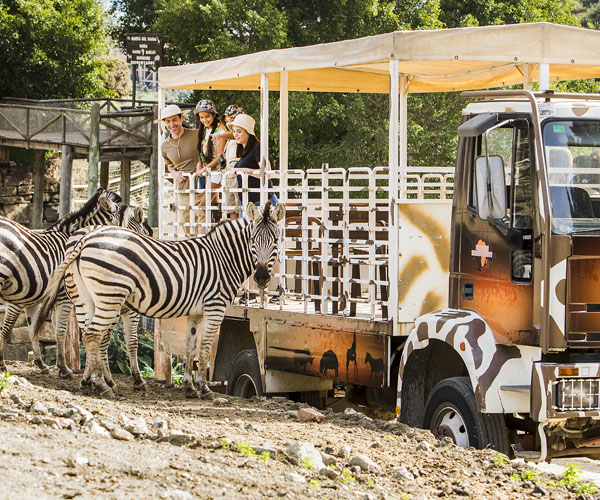The Angolan giraffe, also known as the Namibian giraffe or smoky giraffe, (Giraffa giraffa angolensis) is a subspecies of giraffe widespread on the southern border between Angola and Zambia, as well as in Botswana and much of northern and northeastern Namibia. Although nine subspecies of giraffe were traditionally recognised, a comprehensive DNA study of populations determined in 2016 that there are four distinct giraffe species (Giraffa camelopardalis, Giraffa reticulata, Giraffa tippelskirchi and Giraffa giraffa, with the Angolan giraffa being considered a subspecies of the latter). Genetic studies in the first decade of the 21st century determined that the Namib Desert and Etosha National Park populations are a distinct species, with an estimated 20,000 individuals in the wild and a few dozen in zoos. Its identifying pattern differs from that of other species in that it consists of large, yellowish-edged, leaf-shaped, toothed patches.
Its long neck, up to two metres long, is supported by seven cervical vertebrae, the same number as humans. The giraffe's height, up to six metres, makes it the tallest land animal, which eliminates competition with other herbivores for food and allows it to reach the highest leaves of trees. In wooded habitats, it has a preference for the leaves of thorny species such as acacia, which it can reach with its long, dark blue tongue, up to 50 centimetres long, avoiding the thorns, while its lips and palate are also prepared so as not to be injured by them. They can also feed on fruit, bushes or bark, requiring less food than other ruminants due to their more efficient digestive system. They are characterised by two or four bony cones, horn-like structures, thin with a small tuft of upper hair in females and young and hairless in adult males. These structures may have some role in thermal balance, although they are also used by males in possible territorial confrontation duels.
Giraffes can live in groups of around 10 to 30 individuals, although they do not have strong social bonds and the composition of herds changes frequently, with the bonds between mothers and their young being more stable, while young males socialise more, engaging in mock fights, and adults become more solitary as they grow older. Reproduction is polygamous, with a single calf per birth, which is born at a height of just under two metres and can run within hours of birth after a gestation period of 400-600 days. After spending the first few weeks hidden or protected by their mother, it is common for small "nurseries" to be created under the care of a single female while the rest move to feed or drink. They are generally not very noisy, as they do not have vocal cords and communicate over long distances with infrasound, although their catalogue of sounds includes loud coughs from the males during courtship, mooing calls from the females to the young, or snorting, bleating, mooing or "meowing" from the young.
